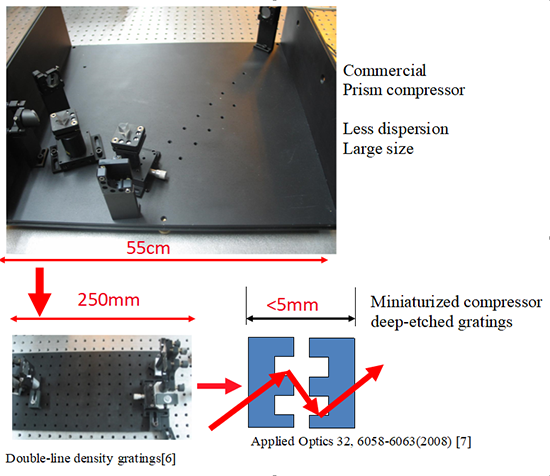Chirped pulse amplification (CPA)technique has been awarded Nobel prize in Physics in 2018.There are rich literatures to explain this technique to public, most from the view of laser physics, that CPA is a powerful tool, using a pair of high-density gratings, to amplify laser pulses to the most powerful laser pulses in the past decades.
From the view of diffractive optics, compression and stretching using gratings are the essence of CPA technique. However, there are few reports to explain that other grating structures can also be used to compress and stretch the femtosecond laser pulses. Prof. Changhe Zhou from Shanghai Institute of Optics and Fine Mechanics, Chinese Academy of Sciences, systematically elucidates the full picture of diverse grating technics that enable the manipulating of femtosecond laser pulses in Chinese Optics Letters, Volume 18, Issue 11, 2020 (C. Zhou, Chirped pulse amplification: review and prospective from diffractive optics [Invited]). Apart from the well-known CPA technique using equal-density gratings, the femtosecond laser pulses can also be compressed by using other grating structures, such as Dammann grating, doubled-density gratings, and deep-etched gratings, and most of these techniques have been invented by Prof. Zhou's research group over the past ten years.
Dammann grating can split the femtosecond laser pulses into multiple equal-intensity spots at different diffraction orders, when the diffraction at each order is compensated by using a corresponding increased-density grating. Doubled-density gratings means there are two gratings where the density of the second grating is doubled of the first grating. The laser pulses at diffractive orders of the first grating can be returned back by placing the second grating whose density is doubled of the first grating, therefore, a compressor of femtosecond laser pulses can be constructed. Deep-etched gratings are the surface-relief gratings, such as the deep-etched fused silica gratings, which can compose a small-size compressor of laser pulses compared with the traditional large-size compressor of prism pair, which is very attractive for building a small-size compressor of femtosecond laser pulses. Besides, other structures of gratings have been invented to generate the multiple pulses of laser pulses for practical applications.
Making high-density gratings with unique property for applications of laser pulses is a challenging work, particularly controlling the period of large meter-sized grating in picometer accuracy. A new world of pico-optics is open for new researches right now, and the research group of Prof. Zhou has invented picometer comb taking advantages of the new concept. It might eventually enable the researchers to explore picometer optics in the future

Doubled density gratings and Deep-etched gratings for compression of femtosecond laser pulses in comparison with the commercial large-sized prism-pair compressor.


